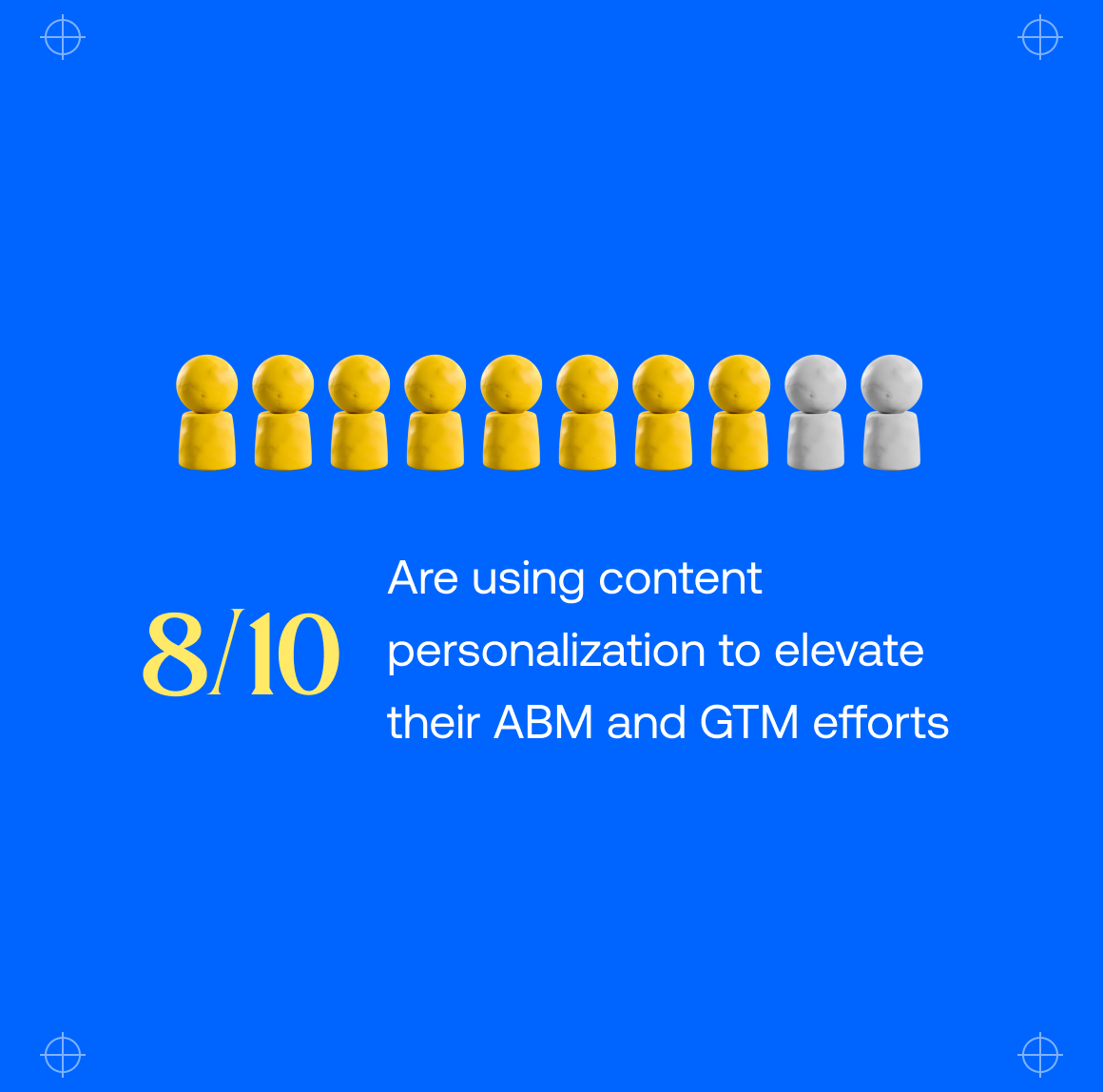The death of manual ABM: why AI is redefining relevancy at scale
In business to business (B2B) marketing, change often comes slowly.
But every so often, a shift happens that’s impossible to ignore – and that’s where we are right now with Account-Based Marketing (ABM).
What was once a high-touch, manual, and heavily resourced strategy (often limited to enterprise organizations) is now undergoing a fundamental transformation, and at the heart of that shift is artificial intelligence (AI).
Marketing and sales teams understand that traditional ABM is one of the most effective strategies for pipeline growth, higher ROI, and deeper customer engagement.

But the issue is that it simply doesn’t scale, and in the current economic climate, scale is everything.
Across the globe, marketing teams are being asked to grow more, prove more, and do more, but with fewer resources, tighter budgets, and goalposts that continue to move each month.
This pressure is leading to an inevitable conclusion: if we want ABM to live up to its promise, we have to let go of the manual playbook. And we have to do it now.
Manual ABM is collapsing under its own weight
ABM has always been about creating highly personalized experiences for a tightly defined group of accounts across the buyer journey. In its purest form, it works brilliantly. The problem? That level of attention and detail becomes impossible to maintain when you're targeting hundreds, even thousands, of accounts.
The old approach to ABM relied heavily on manual labor: researching accounts, building custom content, personalizing outreach, and coordinating between marketing and sales. It was slow, expensive, and hard to measure.
Companies simply cannot afford to do it the old way. Marketing budgets stagnated in 2024, just 7.7% of total company revenue.
Meanwhile, customer expectations have never been higher. Around 70% of B2B buyers expect personalized experiences and 52% say they’ll switch vendors after just one poor interaction.
That’s a tough reality for teams trying to deliver meaningful engagement at scale using spreadsheets and static lists.
The value of ABM hasn’t changed. But the way we execute it has to.
Supercharging precision and better ways of working
The conversation around AI in marketing is often clouded by fear and uncertainty. But the reality is far more pragmatic. AI isn’t here to replace ABM, it’s here to help it finally reach its full potential.
Modern ABM teams are starting to integrate AI into their programs not just to automate tasks but to enable smarter decision-making.
Almost two thirds (62%) of marketers in ABM roles say AI plays a significant role in their strategy today. That includes everything from content creation and copywriting to real-time account scoring and sales enablement.
The real power of AI lies in its ability to make sense of massive amounts of data and turn that into timely, relevant, and actionable insights. AI helps marketers work faster, target smarter, and build personalized experiences at a level of scale that was previously out of reach.
This is less about efficiency for efficiency’s sake, and more about unlocking potential and streamlining marketing efforts. It allows leaner teams to operate like larger ones and frees up creative thinkers to focus on strategy rather than repetition.
In business to business, account selection needs to be smarter, not broader
One of the hardest parts of running a successful ABM program has always been choosing the right accounts. Most teams start with firmographics, size, revenue, industry, and then work through a mix of sales intuition and past wins. That’s helpful, but incomplete.
AI is turning that guesswork into guidance. With predictive analytics, teams can analyze behavioral data, buying signals, product usage trends, and even competitor movements to identify which accounts or potential buyers are most likely to convert.
For example, 69% percent of companies now use AI for account selection and prioritization, making this one of the most adopted use cases across ABM today.

And it’s not just about who to target. AI also helps determine when. If an account is still in the awareness stage, it doesn’t make sense to push a sales conversation. AI gives marketers the visibility to adjust their approach based on intent, buying stage, and readiness – something that was almost impossible with manual methods.
Personalization must be meaningful, not just automated
One of the biggest misconceptions about AI is that it leads to impersonal, generic messaging. In reality, when used correctly, AI can help marketers create more relevant and contextual experiences than ever before.
Today, 8 in 10 ABM practitioners say they’re using content personalization to support go-to-market efforts.

What’s more, 61% percent are using AI for asset creation and messaging – and seeing significant results with personalized content.
But personalization isn’t just about swapping out a company name in an email. It’s about showing your audience that you understand their context, their challenges, and their goals.
The most advanced teams are combining AI-driven personalization engines with real-time account signals to craft dynamic journeys that evolve with every interaction. That might include tailored landing pages, AI-generated product recommendations, or even intelligent chatbots that adapt conversation based on the user’s behavior.
This level of personalization drives performance. Programs using contextual messaging and real-time personalization are seeing up to 2x lifts in booked meetings and faster progression through the pipeline.
Predictive engagement is replacing reactive marketing
The traditional demand gen model – gated content, email nurture tracks, direct mail, and late-stage follow-up, is fading fast. Buyers don’t wait for you to catch up anymore: they research independently and expect vendors and sales teams to anticipate their needs.
That’s exactly what AI is enabling. By pulling signals from across the customer journey, content engagement, CRM activity, sales conversations, and even sentiment, AI models can recommend the next-best action for each account. Whether that’s a specific message, a sales play, or a piece of content, it’s about making the experience feel seamless and responsive.
This predictive approach doesn’t just help you reach buyers earlier, it also reduces waste. You’re not bombarding cold leads with irrelevant content. You’re meeting engaged accounts in the moments that matter across the buying journey.
The rise of account-based experience
The most forward-thinking companies are shifting from ABM to Account-Based Experience (ABX). It’s not just a rebrand; it reflects a deeper commitment to customer-centricity across the entire lifecycle, not just at the point of acquisition.
ABX brings marketing, sales, customer success teams, and revenue operations into alignment. Everyone works from the same data, targets the same accounts, and measures the same outcomes. This isn’t possible without AI acting as the connective tissue between systems, people, and processes.
In ABX, first-party data becomes gold. Organizations that build unified views of account activity and sentiment can create more relevant messaging, anticipate churn, and identify expansion opportunities. They’re not just closing deals, they’re building long-term, revenue-generating relationships.
Picking up these signals is absolutely essential for modern businesses. Without a clear understanding of every moment in the buying journey, teams will continue to miss chances to do more with the accounts they already have.
Learn more about ABX and the future of GTM with Steve Armenti.
What's holding teams back from killing the manual account based marketing playbook?
Despite the upside, most organizations are still in the early stages of integrating AI into their ABM strategies. Only 36% say they have a clearly defined roadmap.

The rest are either figuring it out as they go or are stuck due to internal barriers like:
- Lack of AI expertise
- Data quality issues
- Resistance to change
- Poor training and enablement
These gaps are slowing progress. But they’re also fixable. The key is to start small, pilot one or two use cases, demonstrate value, and scale from there. AI doesn’t have to be a full-stack overhaul overnight. It just needs a foothold.
What comes next: orchestration, agents, and always-on ABM
The next evolution in ABM is already emerging. AI-powered agents are beginning to orchestrate entire workflows, intelligently executing steps across campaign design, outreach, sales activation, and follow-up.
These systems are fed by vast repositories of first-party data, market trends, product information, and buyer signals. And they don’t just execute, they adapt. They recommend. They optimize.
In the near future, marketers won’t just build campaigns. They’ll guide AI agents that build and iterate campaigns on their behalf, freeing them to focus on creative strategy and innovation.
The death of manual ABM is not the death of human strategy
AI isn’t here to eliminate creativity. It’s here to enhance it. Manual ABM forced us to choose between scale and quality. AI makes that a false choice.
But to unlock that potential, organizations need to stop treating AI as an add-on and start building it into the core of their go-to-market model. This means better training, smarter tech stacks, stronger collaboration between teams, and a willingness to rethink legacy processes.
As prospects continue to demand more personalized and contextually relevant interactions at every touchpoint, account based experience (ABX) will gradually become the key differentiator between brands that gain and retain new accounts, versus those that consistently churn them.
The teams that embrace this AI shift won’t just survive the transition. They’ll lead it.
Generated £1.3M pipeline by focusing on UTM parameters personalisation.


Generated £1.3M pipeline by focusing on UTM parameters personalisation.








.png)




